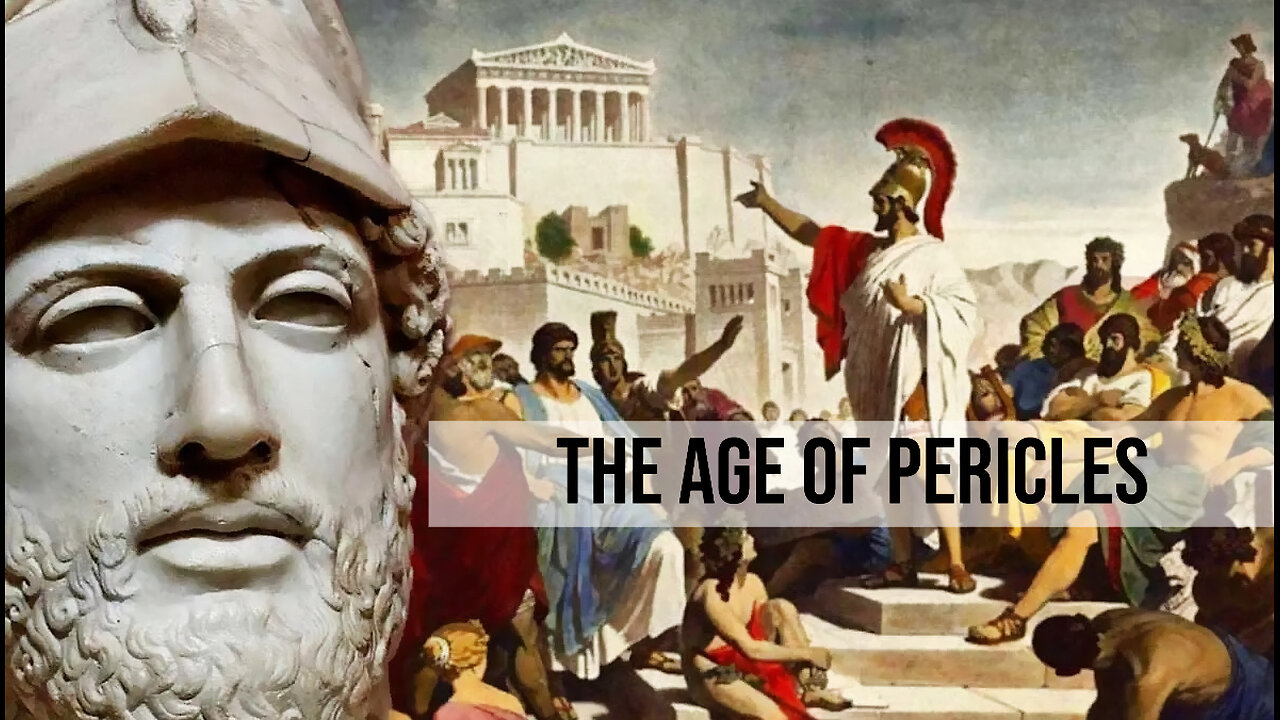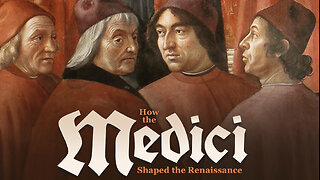Premium Only Content

The Age of Pericles | Coins, Trade, and Business (Lecture 11)
Lecture 11: Coinage first entered the Greek world in the 6th century, making possible rapid development in trade and commerce. Athens was especially wealthy in silver, mined at Laureion south of the city and minted as the famous “owls,” small silver coins with Athena’s symbol, the owl, on one side. This coinage was famous throughout the Aegean, although other states also took pride in minting coins with their states’ gods or distinctive symbols: the rose of Rhodes, the nymph Syracusa, the winged pegasoi of Corinth. The distribution of Greek coins confirms that the Greeks of the 5th century did not rely solely on a barter economy. Trade brought in grain from Ukraine, as well as luxury items from as far away as the Baltic, Africa, and the Near East. Pericles’s Athens was not only a religious and political capital city but also the greatest emporium of the Greek world. Goods flowed into the port of Athens at the Piraeus before transportation to the agora in the city. In this lecture, we’ll see some of the goods brought to Athens and look at how the Athenians responded to the increasing mercantile activity of the Periclean age: Banking, investment, and insurance were all developments new to the Greek world in the 5th century, as was the greater emphasis on regulating the market against fluctuations of supply (leading to fluctuations of prices). The increase in economic activity both reflected and reinforced the supremacy of Athens under Pericles.
Suggested Reading:
Davies, J. K. Wealth and the Power of Wealth in Classical Athens. New York: Ayer, 1981.
Jones, N. F. Ancient Greece: State and Society. New Jersey: Prentice Hall, 1997.
Lecture 12: https://rumble.com/v5ej3jt-the-age-of-pericles-death-and-burial-lecture-12.html
-
 30:08
30:08
The Great Courses
17 days agoHow the Medici Shaped the Renaissance | The Godfather: Cosimo de' Medici (Lecture 3)
212 -
 LIVE
LIVE
FreshandFit
4 hours agoLive X Censorship For Opposing Immigration?!
4,320 watching -
 LIVE
LIVE
Tactical Advisor
22 minutes agoNEW Budget Glocks | Vault Room Live Stream 011
492 watching -
 16:30
16:30
SNEAKO
7 hours agoNO FRIENDS IN THE INDUSTRY.
4.77K14 -
 15:18
15:18
DeVory Darkins
21 hours ago $2.83 earnedTrump Drops NIGHTMARE Warning on Joe Biden
4.96K23 -
 36:13
36:13
The Why Files
1 month agoAlien Implants Vol. 1: Devil’s Den UFO Encounter: What Was Found Inside Terry Lovelace?
39.9K36 -
 4:23:49
4:23:49
FreshandFit
12 hours agoIsrael v Palestine Debate! Respect A Man If He Says No Or Yes To A Girl's Trip?
165K181 -
 2:05:33
2:05:33
TheSaltyCracker
14 hours agoTech Bros try to Hijack MAGA ReeEEeE Stream 12-27-24
298K511 -
 2:01:25
2:01:25
Roseanne Barr
19 hours ago $41.26 earnedJeff Dye | The Roseanne Barr Podcast #80
134K67 -
 7:32
7:32
CoachTY
17 hours ago $12.19 earnedWHALES ARE BUYING AND RETAIL IS SELLING. THIS IS WHY PEOPLE STAY BROKE!!!
124K8